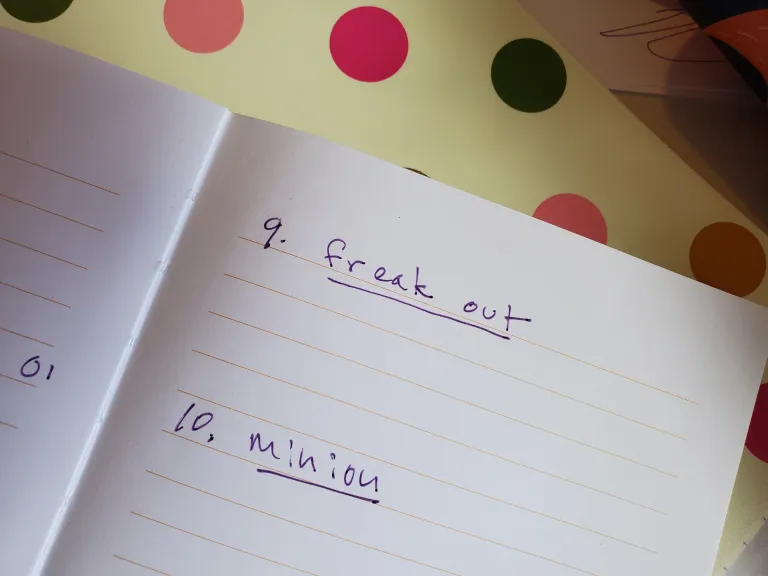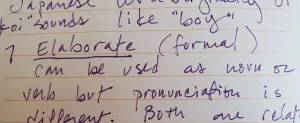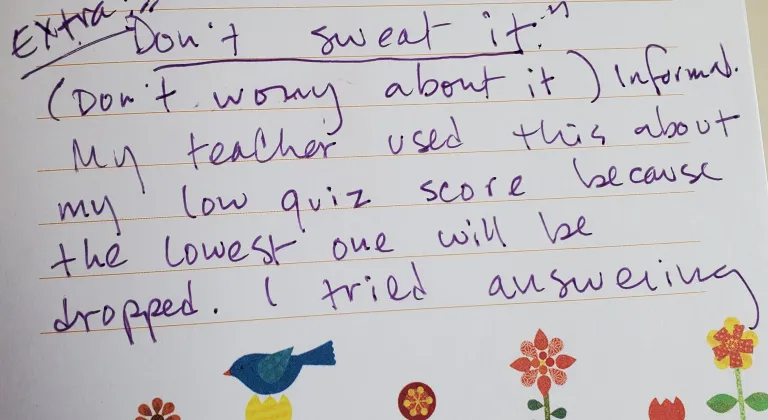7 Steps to Increasing Active Spoken Vocabulary
Most students have a much larger passive than active vocabulary, but increasing active spoken vocabulary can be difficult. Though using new words in writing is lower stakes than in speaking, with only peer review partners and the teacher seeing potential errors, speaking is a different story. Students can feel awkward using new words out loud, especially when they are unsure of the meaning, pronunciation, or context.
So how can we help our students to move those words from passive to active use in speaking? A few years ago, I created the Active Language Journal, which has been very successful. I ask students to make a weekly list of words and phrases they already know—but don’t use orally—and use them in conversation, keeping a record of their successes and difficulties. They then share the highlights of their week with classmates, expanding the active vocabularies of their peers as well.

Make a list of 10 vocabulary items.
Following is a list of steps for students with some caveats for teachers.
1. Make a List
The first step is for each student to make a list of 10 language items, including words, idioms, and phrases, and submit it at the beginning of the week; this is the list they will try to incorporate into conversation over the next 7 days. These items can come from friends, movies, classroom conversations, or lists of academic words—really from anywhere. These are words students already know passively, but have not used actively in the past.

Add notes from a learner's dictionary.
2. Do a Little Research
Because these vocabulary items are already in the student’s passive vocabulary, they will know the meaning, but they might not be familiar with the pronunciation, formality, context, or usage. For this second step, students research the word in a learner’s dictionary, making notes in their journal. I generally recommend Collins, but there are many good free online dictionaries.
3. Make a Plan
After doing research on how words are used, students add notes to their journals on possible times and places to use each word. Is it a word related to an upcoming classroom discussion? Is it a simple expression that can be inserted into a conversation with friends? Would it work in a question you could prepare in advance? If students are fully remote and do not have any interaction with other English speakers, they should focus on using the words in class.

Take notes as you go.
4. Take Notes as You Go
Whether it’s on an iPad or in a physical notebook, students keep the list with them at all times. As they try out the words in conversation, they write notes on how they used them and how it worked out. Was it successful? Were people confused? What feedback did they get?
5. Be Flexible
Often, students encounter a useful word or phrase in conversation during the week, after they’ve made their list. For instance, a student’s roommate might use a slang word during a conversation over lunch that seems like a great addition. That word can be added to the list and may even replace another item.
6. Keep It Fresh
When students do hear a word in conversation that they decide to add to their list in the moment, they should try using that word in the same conversation, while it is fresh. They can also get instant feedback on their usage that way.
7. Teach Others
After a week, a portion of the class should be set aside for students to share their experiences and teach others about their list. Which words were most useful? Which ones did they use the least? What details did they learn about usage? Teachers can take this opportunity to answer any questions that come up.
Finally, students submit their list and notes to the teacher for feedback—along with a new list for the next week.
The Active Language Journal is one method I use to help my students increase their spoken vocabulary. Do you have other strategies? Please share in the comments below.

About the author
A. C. Kemp
A. C. Kemp has been a lecturer in English language studies at MIT since 2007. She has a master’s degree in applied linguistics from the University of Massachusetts/Boston. A. C. has also presented extensively on teaching strategies for vocabulary acquisition. Since 2002, she has been the director of Slang City, a website devoted to American slang and colloquial language. She also has a strong interest in ITA training, for which she created the User-Friendly Classroom Video Series in 2016.